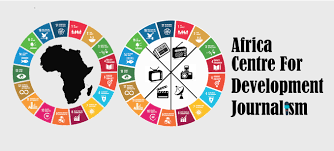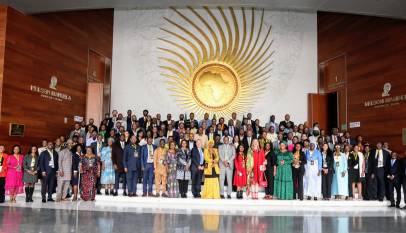“Why child birth spacing has many socioeconomic benefits”
Kabir Abdullahi of Johns Hopkins Public Health In Nigeria Initiative speaks about the initiative’s work around child birth spacing in northern Nigeria

What are the successes achieved by the Johns Hopkins Public Health in Nigeria Initiative?
In Nigeria, the initiative is in its second phase of implementation, the first phase focused on city-specific interventions in the cities of Kaduna, Zaria, Ibadan, Benin, Ilorin and Abuja.
Now, the second phase is covering the entire states of Kaduna, Lagos and Oyo and we are now expanding into Kano and Kebbi states. The first phase of the intervention focused on advocacy, demand generation and service delivery. It had five primary objectives around improved quality of healthcare, strengthened health systems, private public partnerships as well as advocacy and demand generation.
In phase two, the focus is basically around institutionalizing and sustaining the success that was recorded in phase one and we are actually focused around three result areas which are service delivery, enabling environment and access to contraceptives.
We also have demand generation and a research, monitoring and evaluation component that continuously interrogate the intervention to see whether or not we are sustaining and improving on the successes of the program. These interventions are overall designed to reduce maternal mortality and improve the health of women.
The interventions are changing social norms positively by enhancing access to contraceptives which is improving the health of citizens of each of the states covered by the program. Overall, our intervention in phase one led to11.5% increase in contraceptives prevalence across the board in all the cities where we intervened.
In this phase, the goal is to increase contraceptives prevalence rate by 12.5% in all the states we work as well as to strengthen institutions to be able to replicate our programs, by expanding and scaling up the interventions in new locations.
Because the intervention in Zaria city recorded a significant improvement, Kaduna state is supposed to act as a learning hub for the whole of northern Nigeria. This is an indication that even in conservative environments; the interventions can take form and root and therefore lead to increase in access to contraceptives.
I think the key issue is that people need to understand the benefits of birth spacing so they can voluntarily access the services but they also need to be informed and that’s what our demand generation component is seeking to achieve. We are also engaging religious and traditional leaders to be able to expand access to knowledge and get them to clarify to people the permissibility of birth spacing within the religion of Islam.
We have been able to achieve tremendous milestones such that the religious leaders are now very supportive and are therefore providing the necessary community voices to increase awareness by calling on people to access the services as well as urging the government to increase funding so as to reduce cost, which is a major constraint; doing so will allow for more access to contraceptives.
The issue of child birth spacing is a very tricky one in a society like northern Nigeria, what are the major bottlenecks you have faced in the course of implementing this project?
I think the major bottleneck is the people’s level of knowledge on the issue but then our interventions are designed to increase knowledge, to shift attitude around practices and to inspire people to access the services.
Another bottleneck has to do with the myths and misconceptions, there are myths arising from the possibilities of side effects and future fertility desires. In terms of misconception, it has to do with misconceptions about the permissibility of the use of contraceptives in Islam. Therefore, we have engaged Islamic scholars who have been able to clarify that healthy timing and spacing of birth is permissible in Islam.
So, they unanimously agreed on non-permanent or reversible methods of child birth spacing but disagreed on the permanent methods. Our program is very sensitive to the environment; it takes local nuances very serious.
Also, our interventions are geared towards improving understanding and increasing awareness about the services as well as guiding governments to understand that these interventions are required by the communities and will also help the government improve the health and wellbeing of its people, particularly that of women and children.
This is because it has been proven that birth spacing helps reduce maternal mortality by 40% and if that is the case, investment in birth spacing services is an investment that can quadruple the prevention of future burden on the health system.
How critically-important is the role of religious leaders in the success of your campaign in northern Nigeria?
Well, what is important is the fact religious leaders are being involved. The Islamic scholars are very critical because they are trusted by members of the community and they also provide guidance on theological issues, specifically what is permissible in Islam and what is not, since religious injunctions in Islam are very clear on the issue.
The engagement of Islamic scholars helps to ensure increased awareness about the permissibility of birth spacing in Islam. It is important that religious leaders help clarify to the people the issue so that they can practice birth spacing which will help reduce maternal mortality rate in the region.
What are the social and economic benefits of child spacing to the family and society at large?
There are many social and economic benefits of child birth spacing in the sense that a healthy family has a lower out of pocket expenses on health which allows the family to invest their resources in productive areas like the education of their children or improving the quality of the food they eat. The social benefit is that families will be able to take good care of their children and as a result the children do not become a nuisance in the society.













